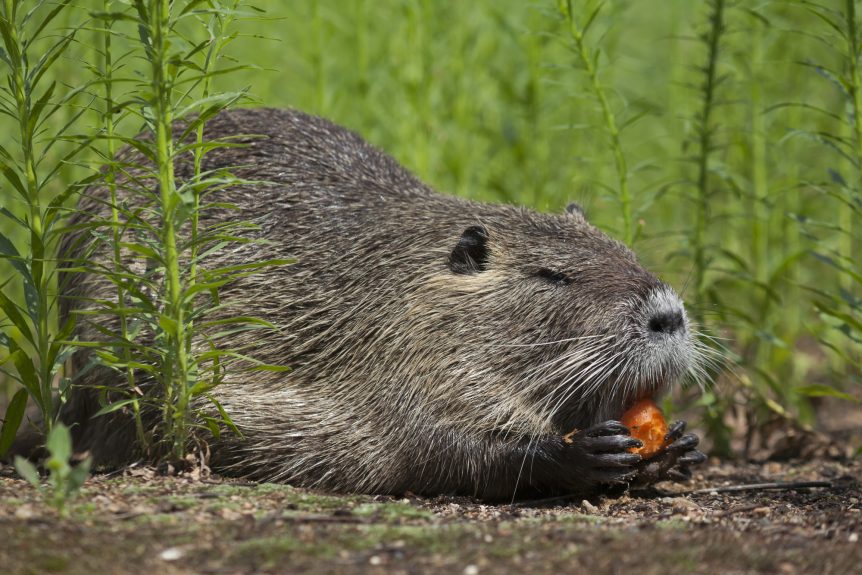The California Department of Fish and Wildlife (CDFW) is working to eliminate the nutria threat that has been growing since the species was first rediscovered in California in 2017. Through financial support from various grant funding, CDFA is implementing a five-phase process for nutria eradication that consists of survey, knockdown, mop-up, verification, and surveillance. CDFW staff have been working the landscape by dividing areas into 40-acre grids to ensure that nothing is overlooked.
“Within each cell in that grid, where suitable habitat exists, we’re applying that five-phase strategy. The first step, the foundation of it all, is survey,” said Valerie Cook, Nutria Eradication Program Manager for CDFW. “We may go through these five phases in succession, we may jump around, we may revisit. There will be many, many cells that never progress beyond survey because no detections ever happen. But where detection does occur, then we’re moving into what we call the knockdown/trapping phase.”
Intensive trapping efforts can vary significantly in duration, lasting anywhere from a few weeks to a year depending the severity of the nutria population. More than 700 nutria have been taken so far in the eradication effort with more than 500,000 acres having been surveyed in the process. “The mop-up and the verification are pretty similar because you either find nutria and you’re removing them, or you never find any more nutria and you’re just verifying that they’re gone,” Cook noted.
Once an area is believed to be free of any nutria, CDFW staff will take a step back and reduce their presence for continued surveillance to ensure that nutria do not return. The five-phase approach to California’s nutria threat is similar to the successful efforts to eradicate the invasive species in the Chesapeake Bay. In order to accomplish the task of eliminating nutria from California, the eradication program hinges on diligent monitoring and the trapping of every single animal.
“All it takes is missing one animal, and the whole thing is wrecked,” Cook noted. “That is where eradications fail, is by premature declaration of eradication, where all you have to do is miss one or two animals and it all comes undone.”
Listen to Cook’s interview below.











